The legend of Dracula has deeply influenced both literature and popular culture for centuries as one of the most striking symbols of horror and mystery. This dark character, who gained fame through Bram Stoker’s 1897 novel Dracula, has gradually become the central figure of vampire mythology. However, for many people, Dracula is not merely a fictional creation; he is a complex figure identified with Vlad Țepeș (Vlad the Impaler), a ruler who lived in Romania’s historical landscape and was infamous for his cruelty.
In this article, we will examine the points where literature and history intertwine to explore how much of the Dracula character is fictional and how much is real. We will look into Vlad Țepeș’s life, his approach to governance, the violent methods he employed, and how Bram Stoker transformed this figure into a symbol of horror literature. We will also explore to what extent the legend set in Transylvania is based on historical facts and which elements became widespread among the people, contributing to the formation of today’s myth.
Who Was Vlad Țepeș? The True Story of “Vlad the Impaler”
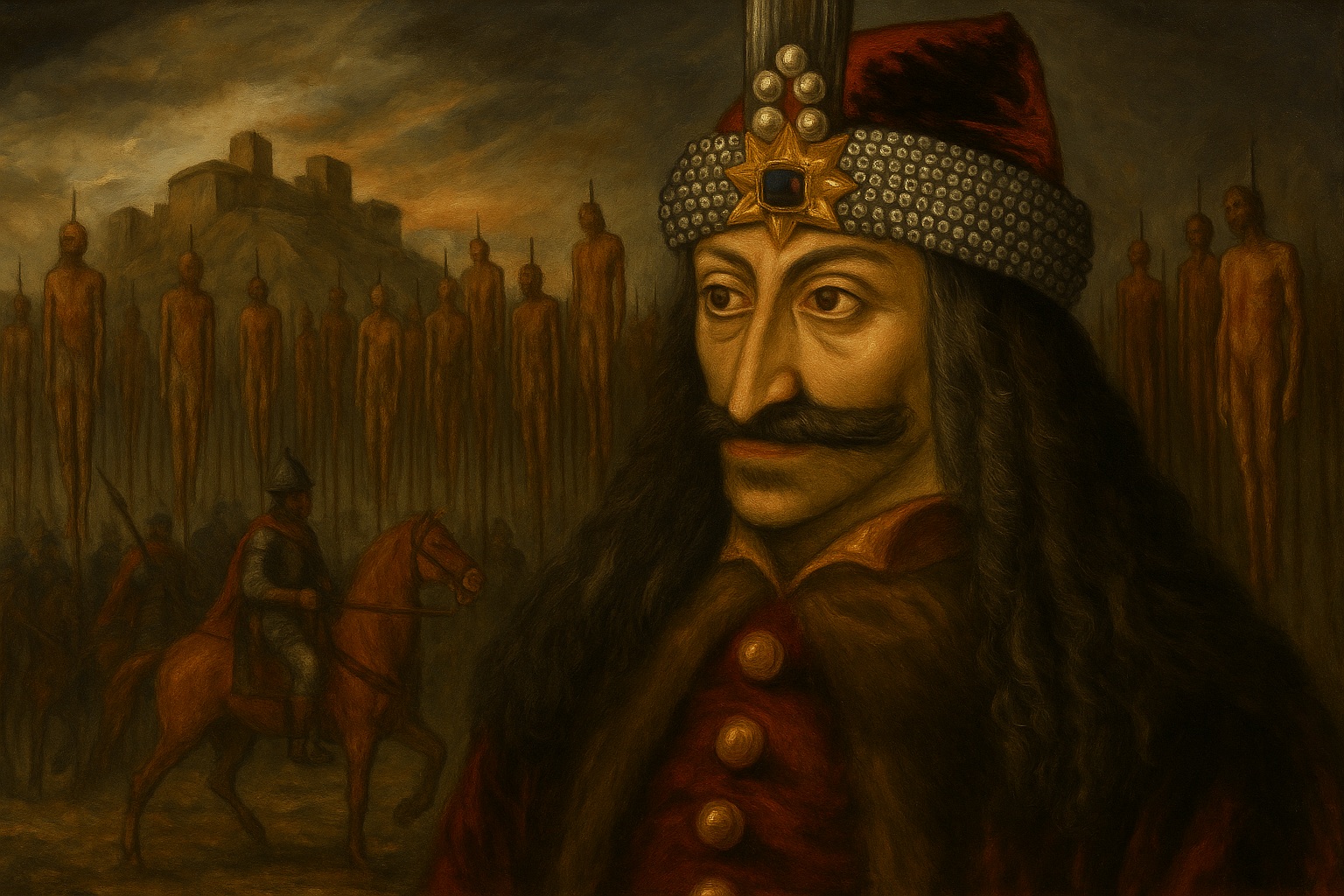
Vlad Țepeș was a figure who lived in the 15th century in the Principality of Wallachia (in present-day Romania) and left a mark on history with both his cruelty and determined leadership. Referred to by the Ottomans as “Vlad the Impaler,” he became especially famous for executing his enemies by impalement, a brutal method that eventually became synonymous with his name. Vlad’s harsh approach to rule aimed to establish authority over his own people and to instill fear in his enemies. Considering the political turmoil and war atmosphere of the time, his methods, though severe, were seen as effective.
Vlad Țepeș’s life is a complex narrative intertwined with folk tales, historical documents, and legends. While some historians view him as a heroic figure, others describe him as a tyrant. His story has left a mark not only on Romanian history but also on the memory of all Europe; over time, it transformed into a dark legend that inspired vampire mythology. In this article, we will objectively examine Vlad Țepeș’s real life, political motivations, and the traces he left in history.
How Was Bram Stoker’s Dracula Novel Born?
Bram Stoker’s Dracula, published in 1897, became one of the most iconic works of Gothic literature and helped shape the foundations of vampire mythology. Before gaining literary recognition, Stoker, an Irish theater manager and writer, spent years in Victorian London studying various cultural and occult sources. The creation of Dracula emerged from a combination of folkloric vampire legends, dark castles in Central Europe, the fear of death, and a fascination with the unknown. Although Stoker never visited Romania or Transylvania, he managed to portray the region with an extraordinary atmosphere through travel books, maps, and historical sources.
While it is widely believed that the main character of the novel, Count Dracula, was inspired by Vlad Țepeș, the Prince of Wallachia, this connection is not entirely based on historical accuracy. In his written notes, Stoker briefly mentioned Vlad’s name and focused mainly on vampire myths. Nevertheless, Vlad Țepeș’s cruelty and the terrifying tales circulated among the people added a dark depth to the Dracula character. Dracula, as a symbolic structure where fear, sexuality, death, and the supernatural come together, has become not only a literary but also a cultural phenomenon.
What in the Dracula Legend Is Real? What Is Fiction?
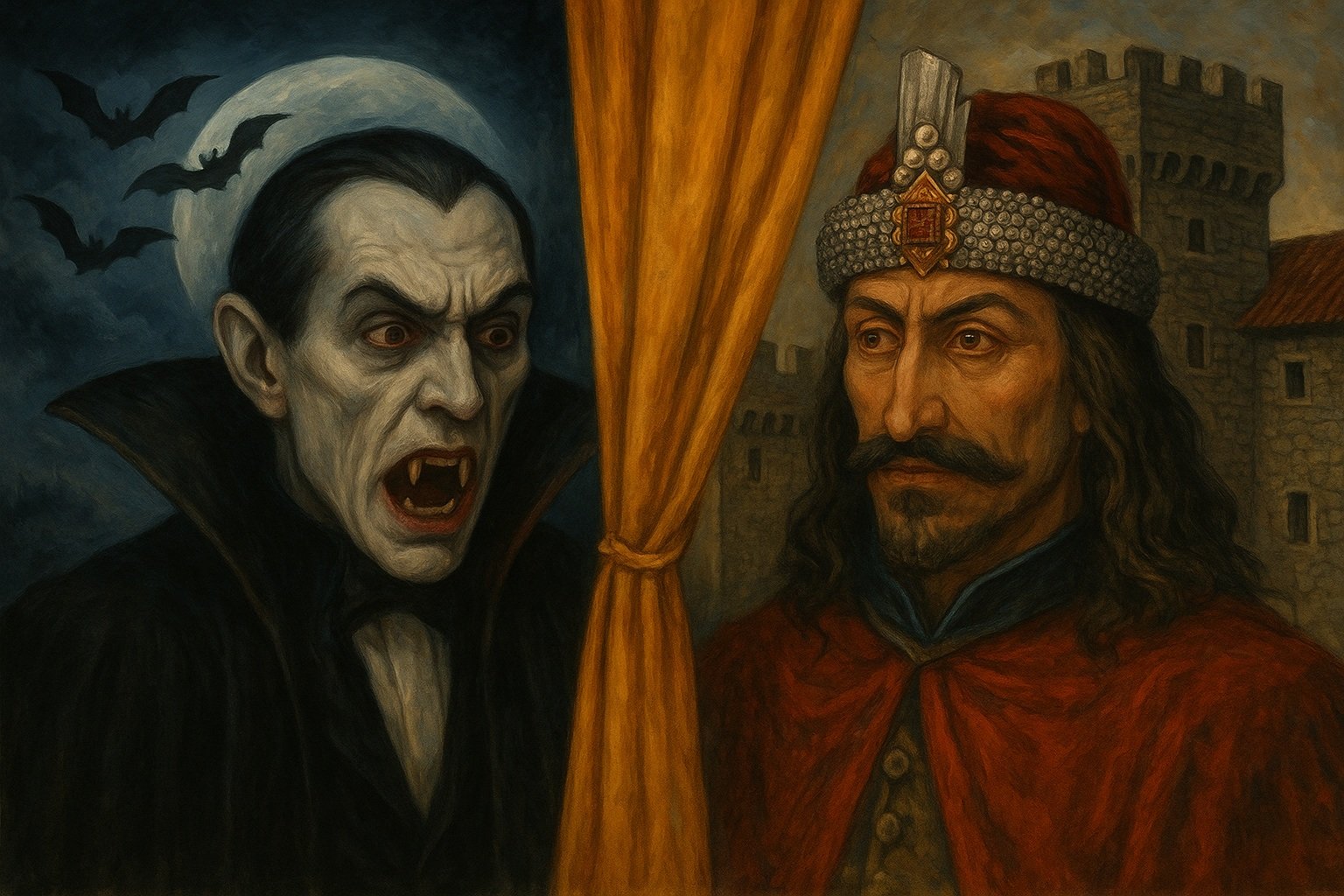
Vlad Țepeș, the central figure of the Dracula legend, was a real historical figure known for his ruthless methods. His executions by impalement, his instillation of fear among the people, and his wars against the Ottomans are documented facts. However, there is no historical evidence that he was a vampire. Some locations mentioned in the Dracula legend, especially the Transylvania region, are based on real places; however, Bram Stoker never visited these places and was inspired by written sources. Additionally, it is known that the name “Dracula” comes from Vlad’s father, Vlad Dracul, and means “dragon” or “devil”—a detail that helped Stoker give his character a mystical and dark aura.
As for the fictional elements, the main components of the novel—vampirism, immortality, thirst for blood, and supernatural powers—are entirely imaginary. Features such as Count Dracula rising from the grave, drinking others’ blood, or transforming into a bat are derived from folk legends and Gothic horror literature. Moreover, the narrative of the novel is shaped not by historical truth, but by the author’s dramatic imagination. In short, the Dracula legend is a fantastical tale woven around a historical figure; it is a structure in which reality and imagination, history and horror culture, are skillfully blended.
The Castles of Transylvania: Where Did the Real Dracula Live?
The most famous structure associated with the Dracula legend is undoubtedly Bran Castle. Located in the mountainous region of Transylvania, this Gothic castle evokes the dark atmosphere of Bram Stoker’s novel through its architecture and setting. However, historical records show no direct evidence that Vlad Țepeș lived in this castle. Bran Castle was marketed in the 20th century as “Dracula’s Castle” due to the influence of tourism and was linked to the legend to attract visitors. Nonetheless, its history and grandeur have made it one of the most visited landmarks in Romania.
The place where the real Vlad Țepeș spent the most time and ruled was Poenari Castle in the Argeș region. This castle was built by Vlad as a strategic defensive point and became a center of resistance against his enemies. Situated on a steep slope, reaching Poenari Castle requires climbing hundreds of steps, showcasing its inaccessibility and defensive power. Although many castles and medieval structures in Transylvania are not directly connected to the Dracula legend, they have become elements that complete the region’s mystical atmosphere and play a significant role in Romania’s cultural tourism.
How Did the Ruthlessness of Vlad the Impaler Turn into Legend?
Vlad Țepeș, or Vlad the Impaler, was a ruler infamous for his cruelty in Medieval Europe. His most well-known and name-giving execution method, impalement, was a policy of fear applied not only to his enemies but also to members of the public who disrupted order. In the politically complex environment of the time, filled with wars and betrayals, Vlad’s brutal methods aimed to establish strong authority. However, these practices eventually resonated not just among the local population but across Europe. Exaggerated depictions in German and Hungarian sources elevated Vlad’s fame to the level of legend, portraying him as an almost inhuman figure.
These tales of cruelty gradually merged with fantastical elements to form a dark myth among the people. Stories of Vlad’s obsession with blood, setting tables with corpses, or mixing his drink with the blood of victims inspired the horror literature that spread especially in Western Europe. Centuries later, with Bram Stoker’s Dracula, these accounts were transformed into the theme of vampirism, and Vlad the Impaler became the real-life inspiration for one of the most terrifying figures in literary history. Thus, historical cruelty turned into an immortal legend through public imagination and written culture.
Where Is Dracula’s Grave? What Do Historians Say?
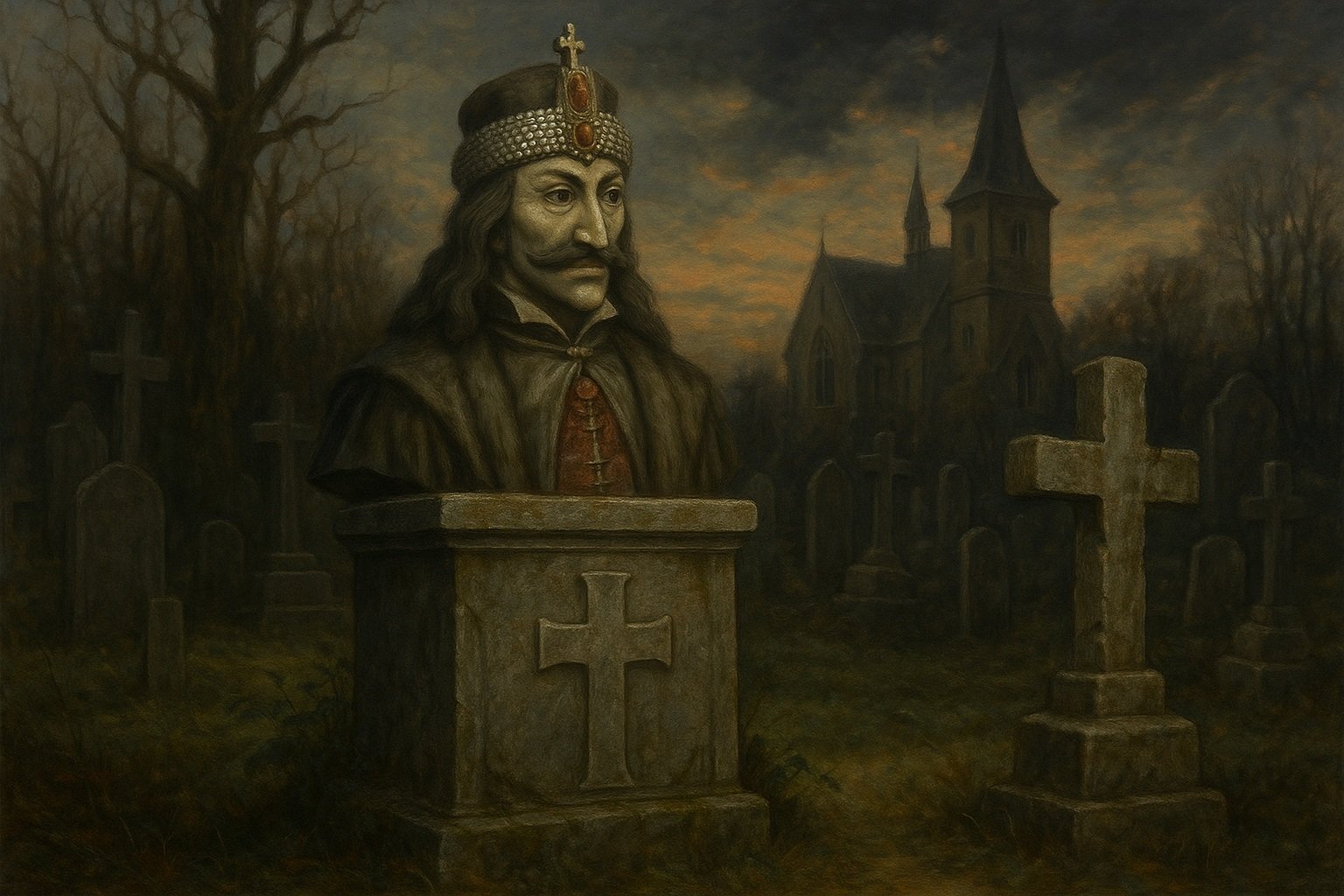
The tomb of Vlad Țepeș, the legendary Dracula, has remained a subject of debate for centuries. The most widely accepted view is that Vlad’s remains were buried at Snagov Monastery in Romania. This monastery, located in the middle of a lake surrounded by forests, is believed to be his burial place due to Vlad’s religious devotion. Excavations conducted in the 1930s revealed an empty grave beneath the monastery’s altar, which raised suspicions that Vlad’s tomb may have been robbed or that he was never buried there. Some researchers argue that the tomb is symbolic and that the real burial site may be elsewhere.
Another claim that has emerged in recent years suggests that Vlad Țepeș’s grave might be located outside of Romania, possibly in Bulgaria or Turkey. Some historians even propose that he was captured and executed by the Ottomans and secretly buried in a different location. This uncertainty has added to the mystery surrounding the Dracula legend. Although the exact location of his grave remains unknown, the ongoing search continues to provide new discoveries for historians and archaeologists while keeping the allure of the legend alive for tourists.
The Connection Between Vampire Beliefs and Medieval Romania
Supernatural beliefs that were common among people in medieval Romania laid the foundation for vampire mythology. Spiritual entities called “strigoi” were believed to rise from their graves after death and haunt the living at night. These beings were thought to drink blood, spread disease, and carry evil spirits. Villagers performed rituals such as driving a stake through the heart, decapitation, or placing garlic in graves to prevent the dead from rising again. These practices demonstrate how deeply rooted the concept of vampires was in local folklore.
These beliefs were shaped by both fears and attempts to cope with the unknown. The inability of the dead to rest in peace, unexplained causes of epidemics, and sudden deaths were often associated with vampirism. Bram Stoker’s novel Dracula drew from these beliefs, giving literary form to already existing folk legends by specifically choosing Transylvania as the setting. Therefore, vampire myths are not merely products of imagination but also reflections of the social and cultural conditions of the time. In medieval Romania, fear of vampires symbolized not only creatures lurking in the dark but also humanity’s ancient connection with the unknown.
Dracula in Cinema and Popular Culture: How Much Reality Was Preserved?
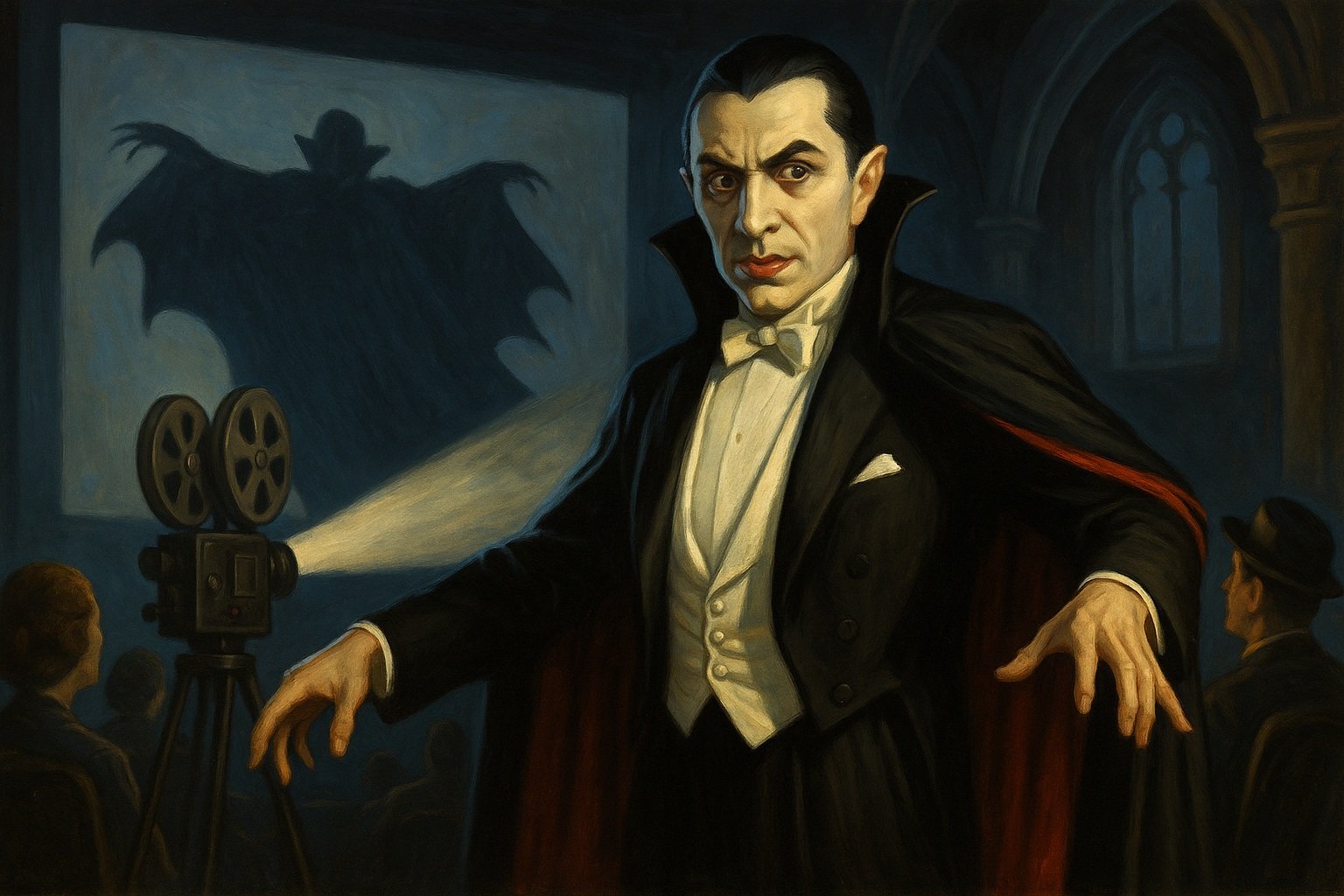
The character of Dracula has become one of the most recognized figures in cinema and popular culture throughout the 20th century. The 1931 film starring Bela Lugosi was the first major production to bring this character to the big screen, based on Bram Stoker’s novel, and it inspired dozens of subsequent films, series, and plays. However, over time, the Dracula figure diverged from the original story and became a symbol of Gothic horror, eroticism, and dark allure. The image of a vampire with sharp fangs, always seen with a cape and lying in a coffin, has taken on a place in the public subconscious that is vastly different from the real Vlad Țepeș.
Popular culture has detached Dracula from his historical context and turned him into a horror icon. The real Vlad Țepeș’s political struggles, conflicts with the Ottomans, and ruling style are rarely portrayed in modern productions. Instead, immortality, curses, bloodthirst, and supernatural powers take center stage. This shift has pushed Dracula’s historical reality into the background while amplifying his legendary dimension. Cinema and television have transformed this character into both a terrifying and charismatic figure, turning a literary creation into a global cultural symbol. As a result, it has become increasingly difficult today to distinguish how much of Dracula is real and how much is fiction.
Is Bran Castle Really Dracula’s? How Authentic Is This Tourism Favorite?
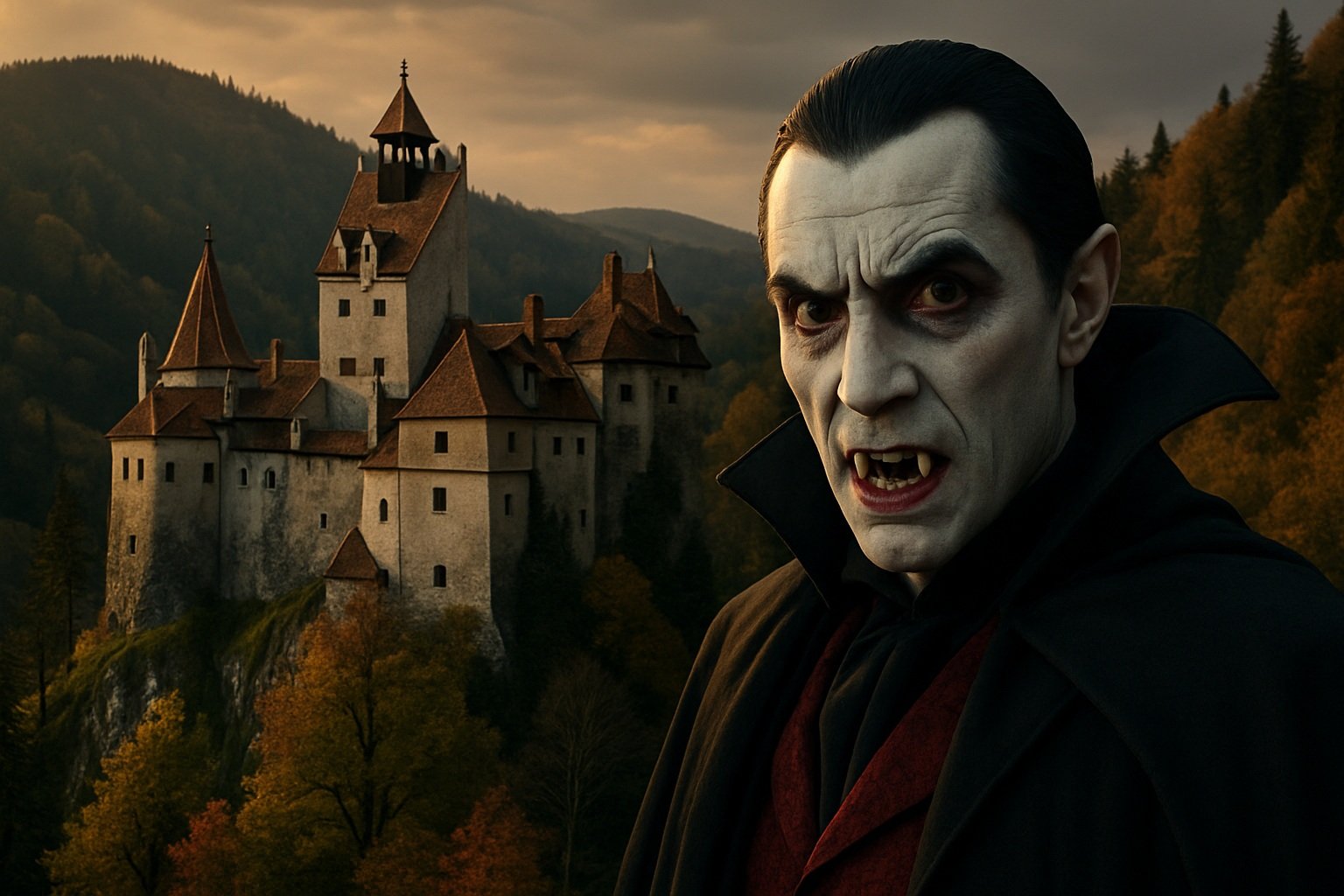
Bran Castle is a magnificent structure located in Romania’s Transylvania region, with an architecture that resembles a fairytale land. Due to its similarity to the descriptions in Bram Stoker’s novel Dracula, it eventually gained fame as “Dracula’s Castle.” However, historical records do not definitively confirm that Vlad Țepeș, also known as Vlad the Impaler, ever lived in this castle. There are strong opinions suggesting that Vlad either passed through the castle only briefly or never stayed there at all. The association of Bran Castle with Dracula is largely a cultural marketing strategy developed in the 20th century to boost tourism.
Nonetheless, Bran Castle has become one of the most visited sites in Romania. With its Gothic towers, narrow stone corridors, high battlements, and impressive views, it offers visitors an experience that appeals to both history and imagination. The castle hosts Dracula-themed exhibits, costumes, and information panels, combining elements of fear and curiosity for tourists. Although it has no direct connection to the real Vlad Țepeș, Bran Castle has become a physical symbol of the Dracula legend and an important part of Romania’s cultural heritage.
The Cultural Role and Touristic Impact of the Dracula Legend in Romania
The Dracula legend in Romania is not only a folk tale or historical debate but also an essential part of the country’s cultural identity and promotion. Especially the Transylvania region has become synonymous with vampire mythology and has inspired numerous literary, artistic, and academic works. While the local population often sees the legend more as a touristic symbol than a historical figure, some groups are uncomfortable with the transformation of a national hero like Vlad Țepeș into a vampire. Despite this, the figure of Dracula holds a position in Romanian culture that is both controversial and influential.
From a tourism perspective, the Dracula legend contributes significantly to Romania’s economy. Places such as Bran Castle, Poenari Castle, and Sighișoara have become key stops on Dracula-themed tours. Every year, thousands of tourists visit the country to see these sites, experience the mystical atmosphere, and stand on the land where the vampire legend was born. Through Dracula-themed festivals, souvenirs, thematic hotels, and guided tours, the legend plays a strong role in Romania’s international promotion and keeps the country’s cultural tourism potential vibrant.
